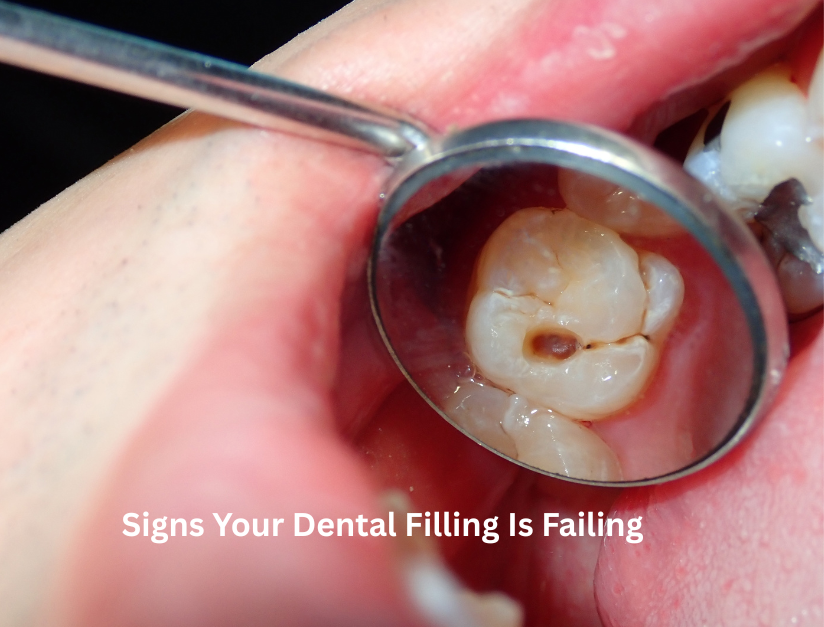Dental fillings are one of the most common restorative treatments, used to repair cavities and restore damaged teeth. But while many people assume that once they get a filling, the problem is solved forever, the reality is different. Even the best fillings can fail over time — leading to tooth sensitivity, decay under the filling, or even the need for a root canal.
In this article, we’ll explore why dental fillings fail, the most common signs of a failing filling, and how you can make your fillings last for years.
Why Do Dental Fillings Fail?
There are several reasons why dental fillings might not last as long as expected. Understanding these causes can help you take better care of your dental work.
1. Natural Wear and Tear
Over time, fillings are exposed to constant chewing, grinding, and pressure. This can cause them to chip, crack, or loosen, especially if you chew hard foods like nuts or ice.
2. Poor Oral Hygiene
Even with a filling, bacteria can still build up around the treated tooth. If you don’t brush and floss regularly, plaque can seep under the filling and cause new decay.
3. Biting Pressure & Teeth Grinding (Bruxism)
People who grind their teeth at night put extra stress on their fillings. This can cause fillings to crack or even pop out completely.
4. Improper Bonding
If a filling isn’t properly bonded to the tooth during placement, it might not seal the cavity well, allowing bacteria to enter.
5. Eating Sticky or Hard Foods
Chewing sticky candies, hard snacks, or chewing ice can dislodge or damage fillings.
6. Changes in Tooth Structure
Sometimes, the tooth around the filling changes due to wear or decay, making the filling less stable.

Signs Your Dental Filling Is Failing
If you notice any of the following, it’s time to visit your dentist before the problem worsens:
- Tooth sensitivity to hot, cold, or sweet foods
- Pain when biting down
- Visible cracks or gaps in the filling
- Rough or uneven surface
- Food getting stuck in the tooth more often than before
How to Make Dental Fillings Last Longer
The lifespan of a dental filling can range from 5 to 15 years, depending on the material and your oral care routine. Here’s how you can extend their life:
1. Maintain Excellent Oral Hygiene
Brush twice daily with fluoride toothpaste and floss once a day to prevent decay around the filling.
2. Visit Your Dentist Regularly
Routine check-ups help your dentist spot small issues before they become big problems. Professional cleaning also prevents plaque buildup that can weaken fillings.
3. Wear a Night Guard if You Grind Your Teeth
A custom-made night guard can protect your fillings from damage caused by bruxism.
4. Avoid Hard or Sticky Foods
Limit foods that can crack or loosen fillings. Opt for softer, tooth-friendly snacks.
5. Get Fillings Checked After Trauma
If you’ve had an accident or injury involving your teeth, have your fillings examined to ensure they’re still secure.
6. Choose the Right Filling Material
Composite (tooth-colored) fillings are great for aesthetics, but amalgam or ceramic fillings might last longer in high-pressure chewing areas.
Types of Dental Fillings & Their Lifespan
| Filling Type | Average Lifespan | Best For |
|---|---|---|
| Composite Resin | 5–7 years | Front teeth, visible areas |
| Amalgam (Silver) | 10–15 years | Back teeth, heavy chewing |
| Ceramic / Porcelain | 15+ years | Durability & aesthetics |
| Gold Fillings | 15–20 years | Long-lasting, less common |
When to Replace a Dental Filling
You should replace your filling if:
- It’s cracked, chipped, or missing pieces
- You experience persistent tooth pain or sensitivity
- Your dentist notices decay under or around the filling
- The filling has worn down significantly

FAQs: Dental Fillings & Their Longevity
1. How long do dental fillings usually last?
Most composite (tooth-colored) fillings last between 5–7 years, while amalgam (silver) fillings can last 10–15 years with proper care. Longevity depends on the filling material, your oral hygiene, and your eating habits.
2. What are the main reasons dental fillings fail?
Fillings can fail due to tooth decay under the filling, cracks or chips from biting hard foods, poor bonding during placement, or natural wear over time.
3. Can a failed filling cause tooth pain?
Yes. If a filling is cracked, loose, or has decay beneath it, you might feel tooth sensitivity or sharp pain, especially when biting down or eating hot/cold foods.
4. How can I make my fillings last longer?
Brush twice daily, floss once a day, avoid chewing hard foods (like ice or pens), and visit your dentist every 6 months for check-ups.
5. Can old fillings be replaced?
Yes. Your dentist can remove the damaged filling and replace it with a new one, often with better materials and technology than before.
6. Is replacing a failed filling painful?
No. Dentists use local anesthesia to ensure the procedure is comfortable. Many modern filling techniques are quick and minimally invasive.
7. Can a filling fall out on its own?
Yes. Biting something hard, grinding teeth, or natural wear can cause a filling to loosen or fall out. If this happens, visit your dentist immediately.
8. What happens if I don’t fix a failed filling?
Delaying treatment can lead to deep tooth decay, infection, and possibly the need for a root canal or extraction.
Final Thoughts
Dental fillings are not a one-time fix — they require care and maintenance. By practicing good oral hygiene, avoiding damaging habits, and visiting your dentist regularly, you can extend the life of your fillings and avoid costly dental problems.
Remember: a filling is only as strong as the tooth that holds it. Taking care of both is the key to a healthy smile.
Website = https://drdeepeshgupta.com/
Contact no = +91 90268 02954

